Discover 35 hidden attractions, cool sights, and unusual things to do in Nagoya (Japan). Don't miss out on these must-see attractions: Nagoya Castle, Atsuta Shrine, and Port of Nagoya Public Aquarium. Also, be sure to include Midland Square in your itinerary.
Below, you can find the list of the most amazing places you should visit in Nagoya (Aichi).
Table of Contents
Nagoya Castle
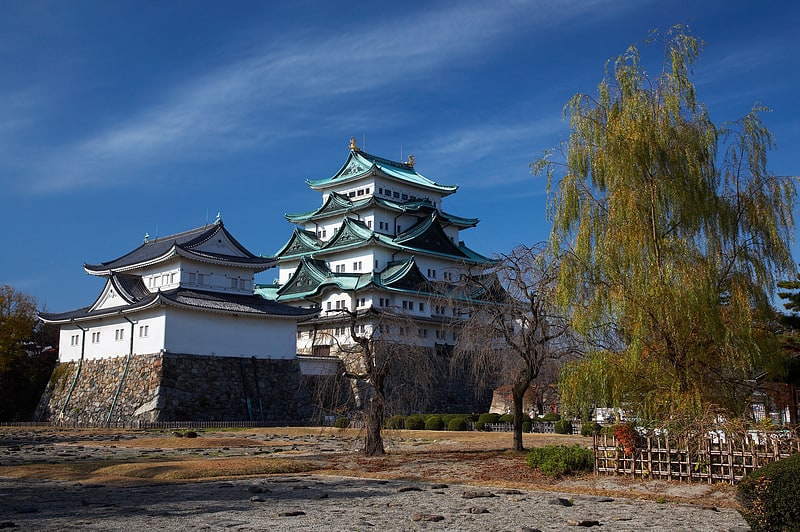
Also known as: 名古屋城
Castle in Nagoya, Japan. Nagoya Castle is a Japanese castle located in Nagoya, Japan.
Nagoya Castle was constructed by the Owari Domain in 1612 during the Edo period on the site of an earlier castle of the Oda clan in the Sengoku period. Nagoya Castle was the heart of one of the most important castle towns in Japan, Nagoya-juku, a post station on the Minoji road linking two of the important Edo Five Routes, the Tōkaidō and the Nakasendō. Nagoya Castle became the core of the modern Nagoya and ownership was transferred to the city by the Imperial Household Ministry in 1930. Nagoya Castle was destroyed in 1945 during the bombing of Nagoya in World War II and the reconstruction and repair of the castle has been undergoing since 1957.
Meijō (名城), another shortform way of pronouncing Nagoya Castle (名古屋城), is used for many Nagoya city institutions such as Meijō Park, the Meijō Line of the Nagoya Municipal Subway, and Meijo University, reflecting the cultural influence of this historic structure. The castle has also historically been called Kinjō (金城), which means "Golden Castle".[1]
Address: 1-1 Honmaru, Naka-ku, Nagoya, 460-0031 Nagoya (中区)
Atsuta Shrine
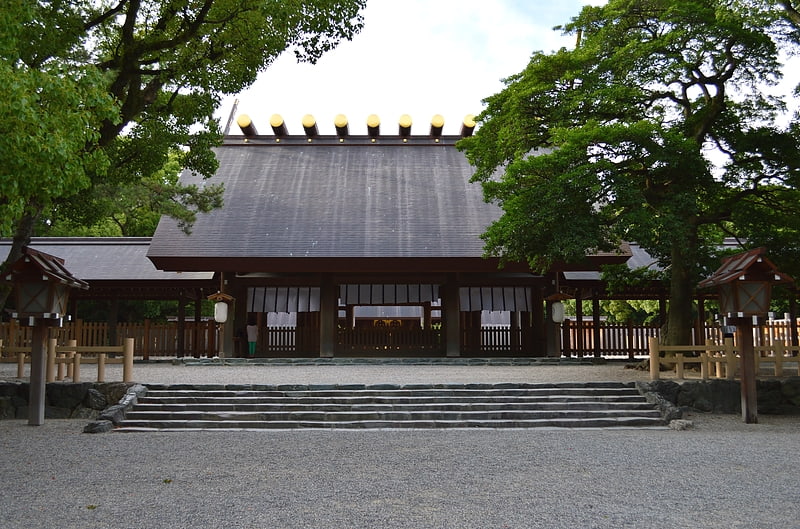
Also known as: 熱田神宮
Shrine in Nagoya, Japan. Atsuta Shrine is a Shinto shrine traditionally believed to have been established during the reign of Emperor Keikō located in Atsuta-ku, Nagoya, Aichi Prefecture in Japan. The shrine is familiarly known as Atsuta-Sama or simply as Miya. Since ancient times, it has been especially revered, ranking with the Grand Shrine of Ise.
The 200,000-square-metre (2,200,000 sq ft) shrine complex draws over 9 million visitors annually.[2]
Address: 1-1-1 Jingu, Atsuta-ku, 456-8585 Atsuta (熱田区)
Port of Nagoya Public Aquarium
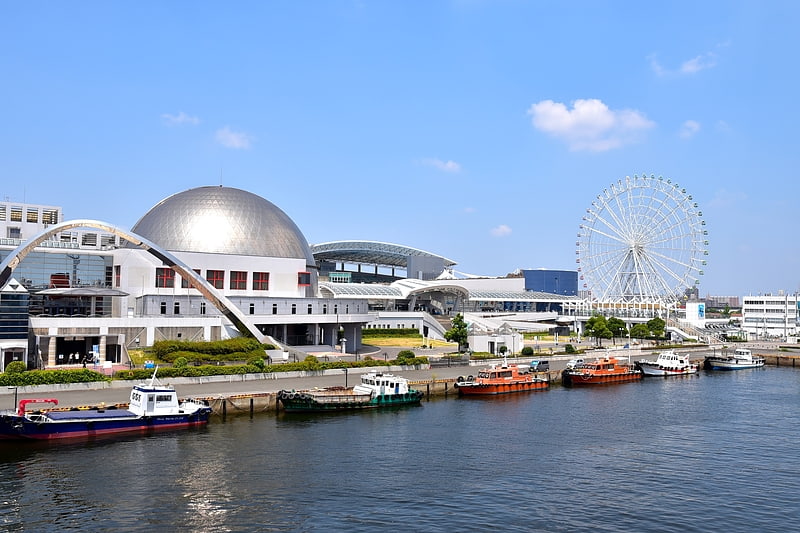
Also known as: 名古屋港水族館
Aquarium in Nagoya, Japan. Port of Nagoya Public Aquarium is a public aquarium in Minato-ku, Nagoya, Aichi Prefecture, Japan. It is the public aquarium with the largest tank capacity and total area in Japan. It also owns Japan's largest dolphin show tank.[3]
Address: 1-3 Minato-machi, Minato-ku, 455-0033 Minato (港区)
Midland Square
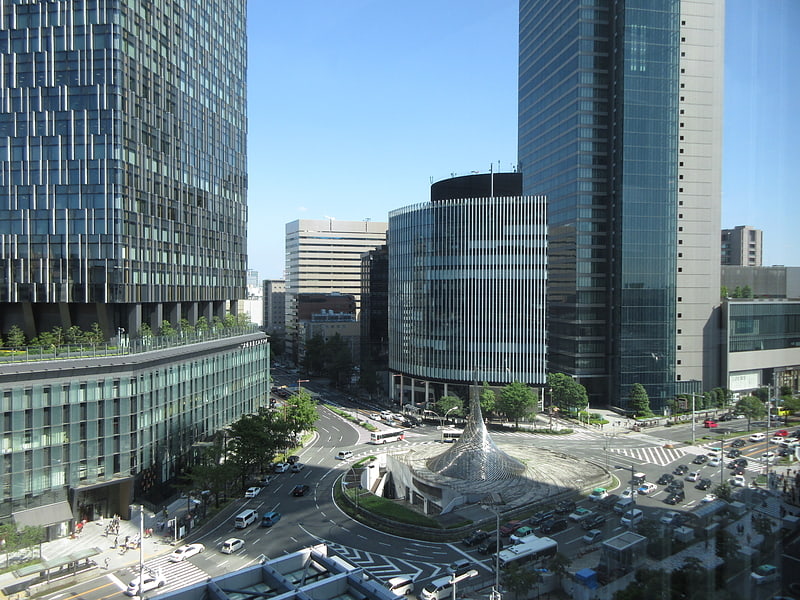
Also known as: ミッドランドスクエア
Skyscraper in Nagoya, Japan. Midland Square, officially called Toyota-Mainichi Building, is a skyscraper located in the Meieki district of Nakamura-ku, Nagoya, Aichi, Japan. It opened in early 2007. It is the tallest building in Nagoya and the fifth tallest building in Japan as of 2015. At 247m, it is slightly taller than the nearby JR Central Towers.
Midland Square houses offices of many companies including Toyota Motor Corporation, Towa Real Estate and Mainichi Shimbun. It features a shopping center with 60 name-brand stores, two automobile showrooms and a cinema. It also holds the record for the highest open-air observation deck in Japan. Also of note are the unusual double-floored elevators, which take only 40 seconds to rise to the top.
The name of the building derives from the Chūbu region (which means "central region") of which Nagoya is the capital.[4]
Address: 4 Chome-7-1 Meieki, Nakamura-ku, Nagoya-shi, 450-0002 Nagoya (中村区)
Tsuruma Park
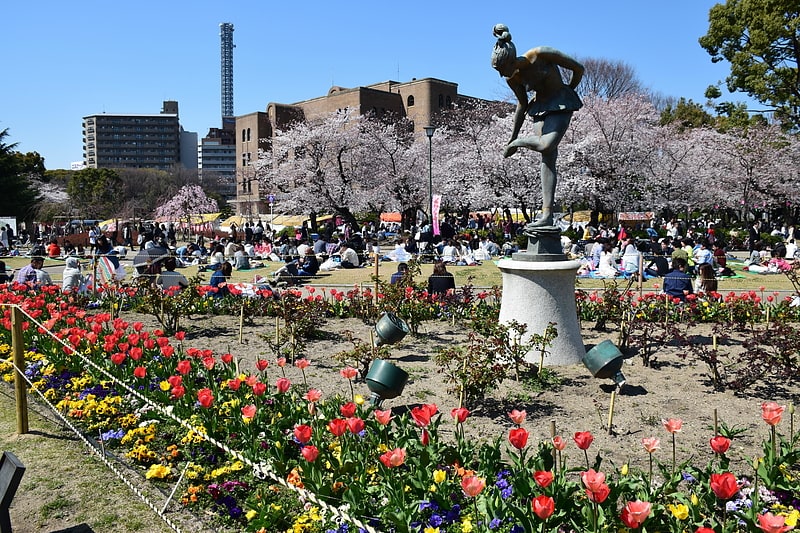
Also known as: 鶴舞公園
Park in Nagoya, Japan. Tsuruma Park is a park located in Shōwa-ku, Nagoya city, Aichi Prefecture, Japan.[5]
Toyota Automobile Museum
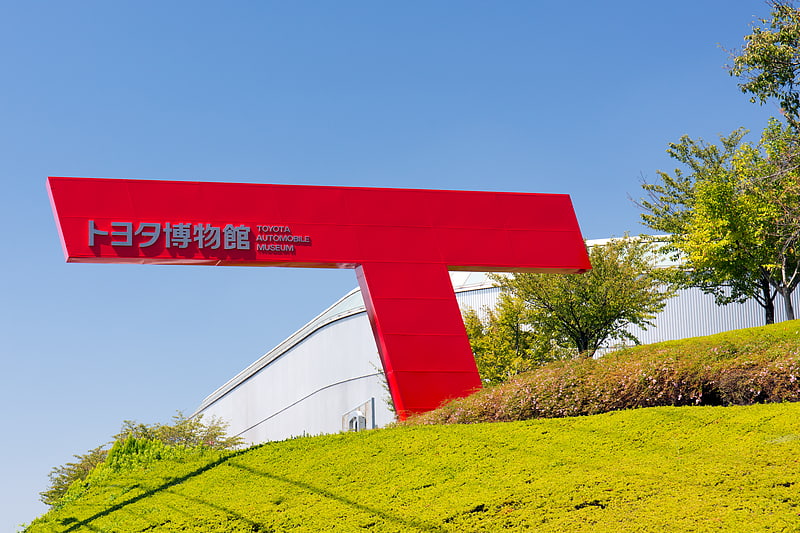
Also known as: トヨタ博物館
Museum in Nagakute, Japan. The Toyota Automobile Museum is a large museum showcasing Toyota's storied past. It is a large complex located in Nagakute city, a city close to Nagoya, Japan.[6]
Address: 41-100 Yokomichi, 480-1118 Nagakute
Nagoya Dome
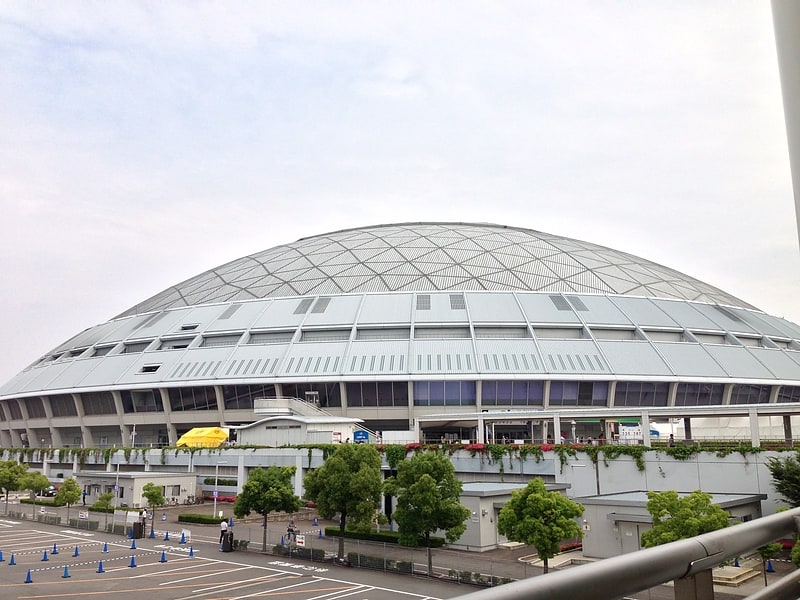
Also known as: ナゴヤドーム
Sports dome in Nagoya, Japan. The Nagoya Dome, known as Vantelin Dome Nagoya for sponsoring reasons, is a baseball field, constructed in 1997, located in the city of Nagoya, Japan. The dome has the capacity to seat up to 40,500 for sports and 49,000 for concerts. It is an example of a geodesic dome.
It has served as HQ for the Chunichi Dragons baseball team, since its opening. It has also served baseball teams Orix BlueWave and Kintetsu Buffaloes, sometimes during the year.
Official theme song for The Nagoya Dome, "Here For You", was written by local FM radio disk jockey, James Havens, and also released on CD by Victor Entertainment.[7]
Address: 1 Chome-1-1 Daikōminami, Higashi-ku, Nagoya-shi, 461-0047 Nagoya (東区)
Kiyosu Castle
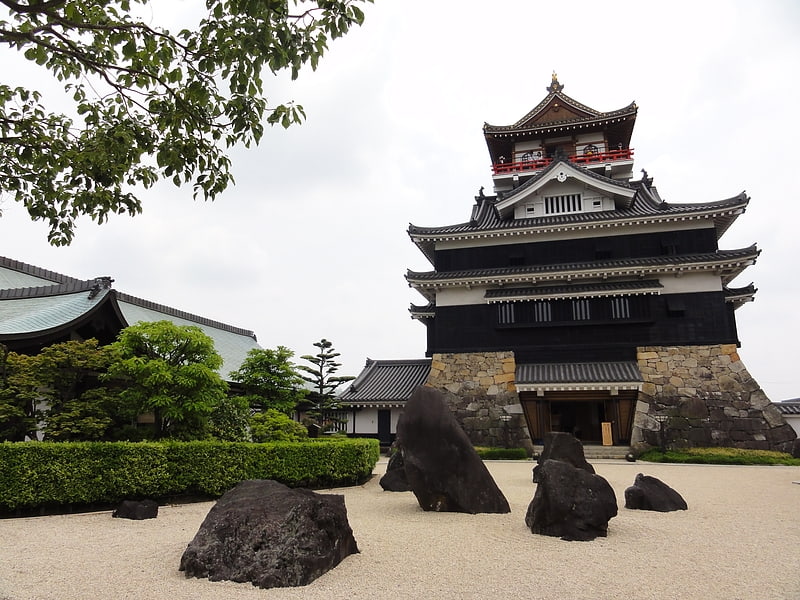
Also known as: 清洲城
Castle in Kiyosu, Japan. Kiyosu Castle is a Japanese castle located in Kiyosu, eastern Aichi Prefecture, Japan. It is noted for its association with the rise to power of the Sengoku period warlord, Oda Nobunaga. The kanji in the name of the castle was written as 清須城. The current partial reconstruction dates to 1989 and was built as a centennial celebration for the modern-day city of Kiyosu.[8]
Address: 1-1 Shiroyashiki, Asahi, 452-0932 Kiyosu
Higashiyama Zoo and Botanical Gardens

Also known as: 東山動植物園
Zoo. The Higashiyama Zoo and Botanical Gardens is a joint zoo and botanical garden located at Chikusa-ku, Nagoya, Japan. It is open every day except Monday, and charges a modest admission fee.
Established in 1937, the Higashiyama Zoo is one of Asia's largest attractions, featuring a botanical garden and an amusement park. The Zoo contains more than 125 species of mammals, including bears, elephants, giraffes, zebras, lions, and tigers, numerous reptiles and birds, and medaka tropical fish that flew on the space shuttle with one of Japan's astronauts. The logo for the koala exhibit was designed by manga artist Akira Toriyama in 1984. It keeps more than 450 species which is the largest number in Japan.
Garden collections include Aconitum, Camellia, Gentiana, Glycyrrhiza, Papaver, Rheum, and native wild flora, as well as a greenhouse, insect hall, and a Japanese garden. The Higashiyama Sky Tower allows visitors a view of Nagoya from its observation decks, and also features a restaurant 100 metres above ground.
As of 2010, Higashiyama Zoo had the 2nd most annual park visits of any zoo in Japan, behind only the Ueno Zoo in Tokyo.[9]
Address: Nagoya-shi, Chikusa-ku, Tashirochō, Kameiri, 〒464-0804 Nagoya (千種区)
Ōsu Kannon

Also known as: 大須観音
Buddhist temple in Nagoya, Japan. Ōsu Kannon is a Buddhist temple of the Shingon sect located in Ōsu, in central Nagoya, Japan. It belongs to the Owari Thirty-three Kannon.[10]
Address: 2-19-39 Osu, 460-0011 Nagoya (中区)
Nittai-ji
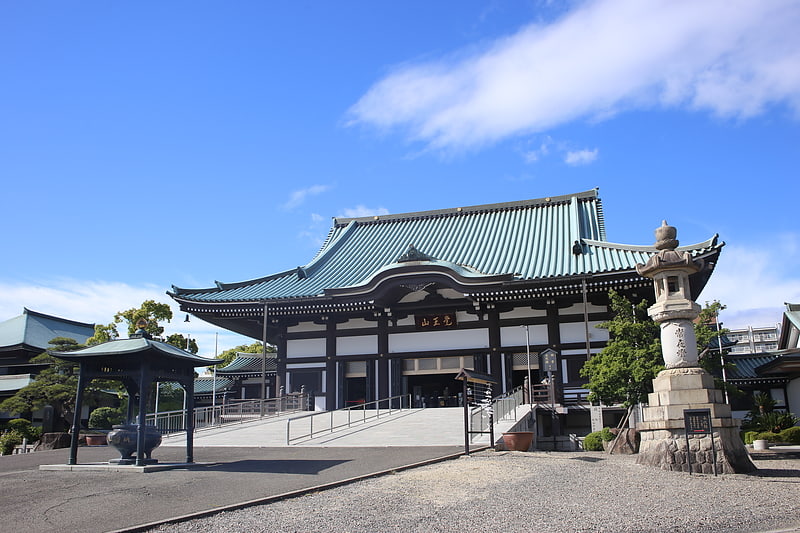
Also known as: 覚王山日泰寺
Temple in Nagoya, Japan. Kakuōzan Nittai-ji is a Buddhist temple located in the city of Nagoya, Aichi prefecture, Japan. It was built in 1904 in order to keep the ashes of Buddha, given to Japan by the Kingdom of Thailand. ”覚王” literally means "Enlightenment King," referring to the Buddha, and “日泰” means Japan and the Kingdom of Thailand in Japanese.
Usually, each temple in Japan belongs to a religious sect. However, Nittai-ji doesn't belong to any religious sect. Every three years, 19 religious sects take their turn to dispatch a chief priest to Nittai-ji. Usually, the ambassador of the Kingdom of Thailand visits Nittai-ji on his birthday.[11]
Address: 1-1 Hoo-cho, Chikasa-ku, 464-0057 Nagoya (千種区)
Wakamiya Hachiman Shrine
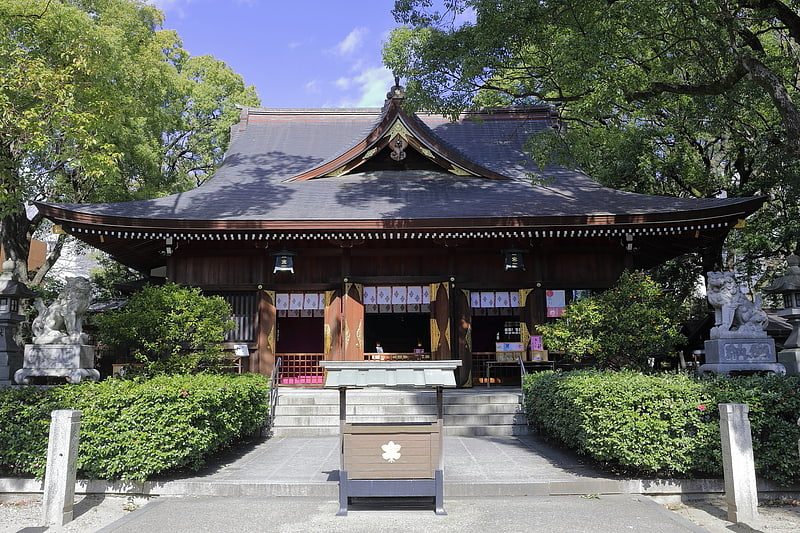
Shinto shrine in Nagoya, Japan. The Wakamiya Hachiman Shrine in Suehiro-chō, Sakae 3-chōme in the Naka ward of Nagoya is a historic Shinto shrine.
It dates back to the Taihō era (701-704). It was the main shrine of the Owari Tokugawa family.
The shrine was destroyed in the bombing of Nagoya in World War II, but rebuilt in 1957.
A large festival is held there every May.[12]
Tokugawa Art Museum
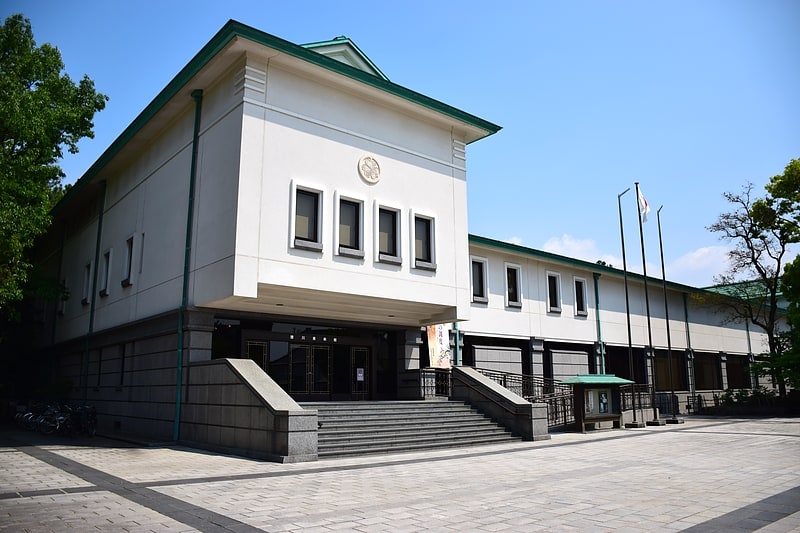
Also known as: 徳川美術館
Museum in Nagoya, Japan. The Tokugawa Art Museum is a private art museum, located on the former Ōzone Shimoyashiki compound in Nagoya, central Japan. Its collection contains more than 12,000 items, including swords, armor, Noh costumes and masks, lacquer furniture, Chinese and Japanese ceramics, calligraphy, and paintings from the Chinese Song and Yuan dynasties.[13]
Address: 1017 Tokugawacho, Higashi Ward, Nagoya, 461-0023 Nagoya (東区)
Banshō-ji

Also known as: 萬松寺
Temple in Nagoya, Japan. Banshō-ji is a small temple located in Ōsu in central Nagoya, Japan.
Lord Oda Nobuhide (1510?-1552) built this Sōtō Buddhist temple in the then village of Nagoya in 1540, and invited the priest Daiun to open it. Katō Kiyomasa (1562–1611) stayed at the temple, which served as his quarters while he was engaged in the construction of Nagoya Castle. The temple was rebuilt in 1610 at its present site.
Directly located at the main street is the stone gate. Two kitsune (fox spirits) guard the entrance. Many paper lanterns give light.[14]
Address: 3-29-12 Osu, Naka-ku, 460-0011 Nagoya (中区)
Ōguruwa Shell Midden

The Ōguruwa Shell Midden is an archaeological site with a shell midden and Jōmon period settlement site located in the Yamashitatori neighborhood of Mizuho ward of Nagoya, Aichi Prefecture in the Tōkai region of Japan. The site was designated a National Historic Site of Japan in 1941.[15]
Noritake Garden
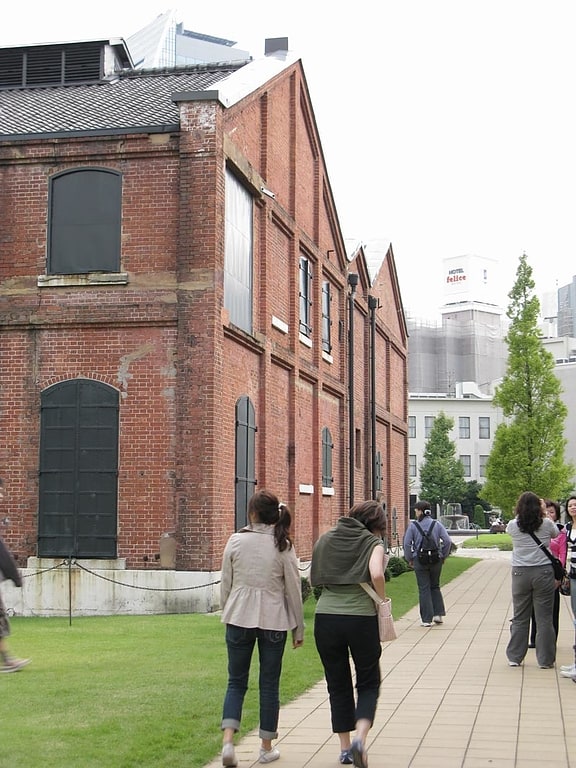
Also known as: ノリタケの森
Tourist attraction in Nagoya, Japan. The Noritake Garden is located in the city of Nagoya in central Japan.[16]
Address: 3-1-36 Noritake Shinmachi, Nishi-ku, 451-0051 Nishi (西区)
Aichiken Forest Park
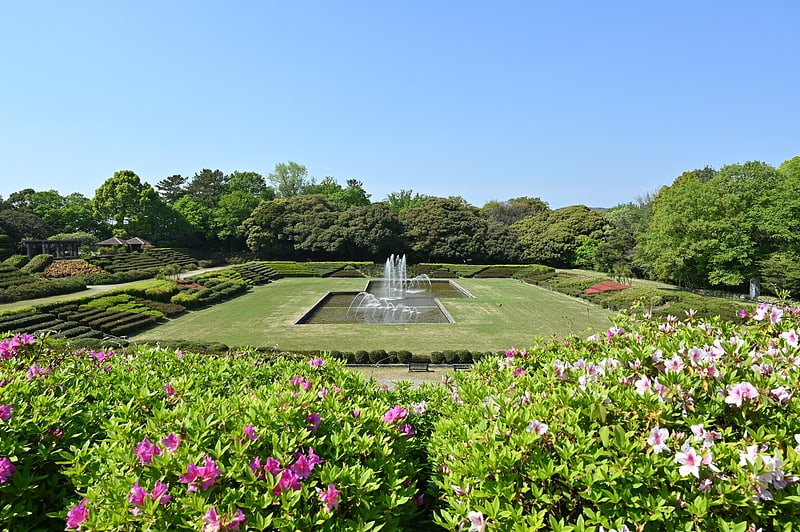
Park in Japan. Aichiken Forest Park is a forest park located in the area encompassing Owariasahi and Moriyama-ku, Nagoya, Aichi. In its vast forest of about 468 hectares, it also includes a botanical garden and various sports facilities, such as tennis courts, baseball and archery fields, a horse riding course, a golf course, and sports plazas.
The park opened in 1934 as Japan's first forest park.[17]
Nagoya City Hall
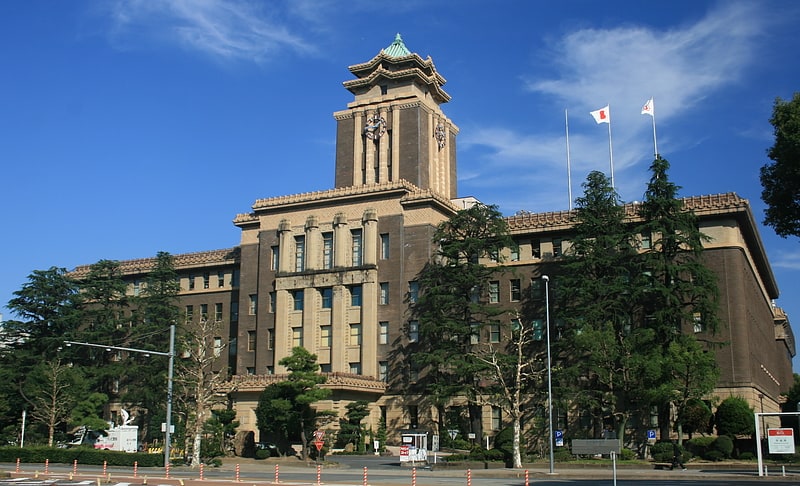
Also known as: 名古屋市役所
City or town hall in Nagoya, Japan. Nagoya City Hall is the city hall of the city of Nagoya, Japan.
It is designed in the Imperial Crown style, a fusion Japanese and modern style. It survived the bombings of World War II and is registered as a Tangible Cultural Property of Japan.
It is located close to the Aichi Prefectural Government Office.[18]
Address: 3-1-1 Sannomaru, Naka-ku, 460-0001 Nagoya (中区)
Menard Art Museum
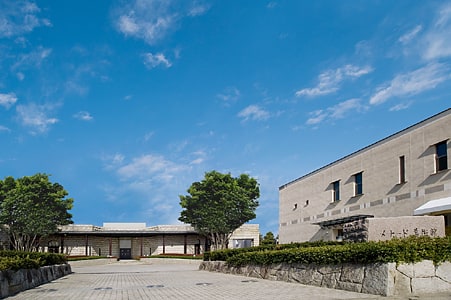
Also known as: メナード美術館
Museum in Komaki, Japan. The Menard Art Museum is a museum located in Komaki, Aichi Prefecture, Japan. The museum was founded by the owners of Nippon Menard Cosmetic Co. and opened in 1987.
Art works in the permanent collection include "Portrait of Jeanne Martin in hat adorned with rose" by Édouard Manet (1881), and "Man in a Field or Evening, the End of the Day" (1889) by Dutch painter Vincent van Gogh.
The museum has a large collection of Japanese paintings of the 19th and 20th centuries. On display are both works of art in traditional Japanese style of painting (Nihonga), as well as images that have been influenced by Western art movements (Yōga). Paintings in traditional Japanese style are by Tawaraya Sōtatsu, Ogata Kōrin, Katsushika Oi, Yokoyama Taikan, Uemura Shōen, Kobayashi Kokei, Yasuda Yukihiko, Maeda Seison, Murakami Kagaku, Okumura Togyū, Fukuda Heihachirō, Hayami Gyoshū, Higashiyama Kaii, Takayama Tatsuo, Kayama Matazō and Hirayama Ikuo.
Among the Western influenced artists found in the collection are Fujishima Takeji, Okada Saburōsuke, Yasui Sōtarō, Umehara Ryūzaburō, Kuniyoshi Yasuo, Kishida Ryūsei, Yamaguchi Takeo, Munakata Shikō, Nakamura Tsune, Kanji Maeta, Saeki Yūzō and Koide Narashige.[19]
Address: 5-250 Komaki, 485-0041 Komaki
Meijō Park
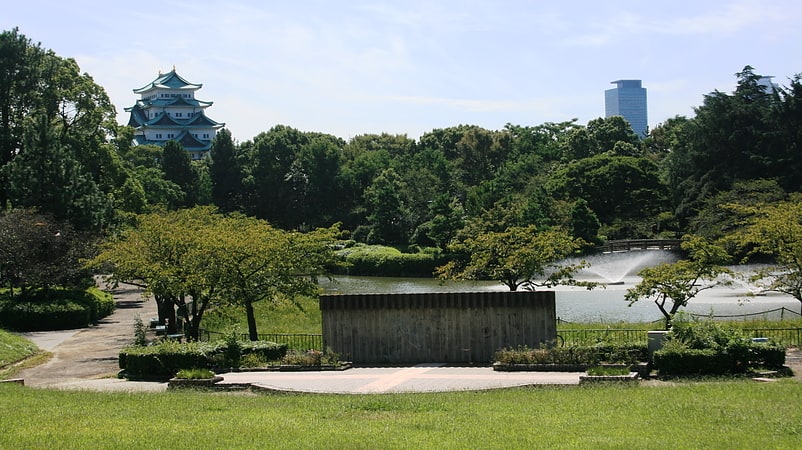
Also known as: 名城公園
Park in Nagoya, Japan. Meijō Park is a public park surrounding Nagoya Castle in Kita-ku, Nagoya, Japan[20]
Address: 1chome Meijo Kita-ku, 462-0846 Kita (北区)
Nagoya TV Tower

Also known as: 名古屋テレビ塔
Tower in Nagoya, Japan. The Nagoya TV Tower is a TV tower in Nagoya, central Japan.[21]
Address: 3-6-15 Nishiki, Naka-ku, 460-0003 Nagoya (中区)
Kuwayama Art Museum
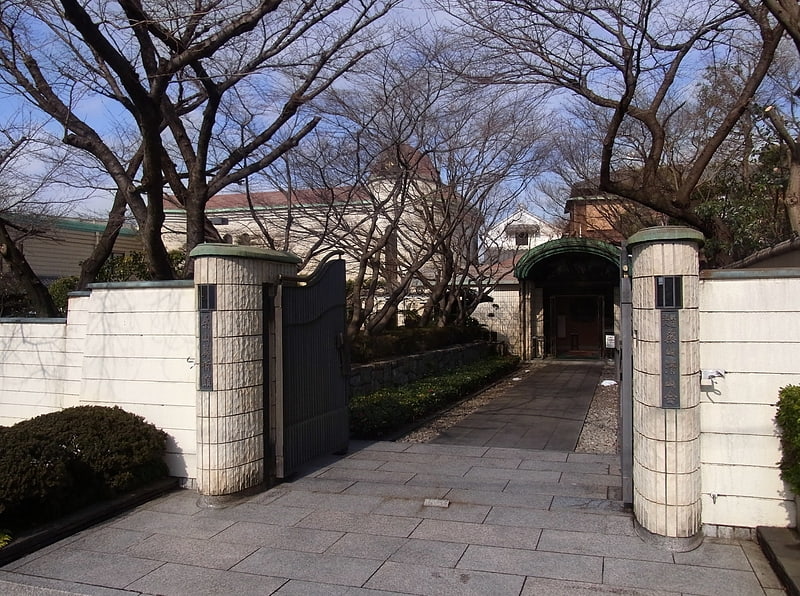
The Kuwayama Art Museum is a private art museum located in the Yamanaka-chō, Shōwa-ku, Nagoya, Aichi Prefecture, Japan
It exhibits Japanese ceramics and paintings which were collected by the gallery's first director, Kuwayama Kiyokazu. The museum also has a multipurpose hall, a small garden and a chashitsu indoors and also outside.
Close by is the Showa Museum of Art and Nanzan University.[22]
Aichi Arts Center
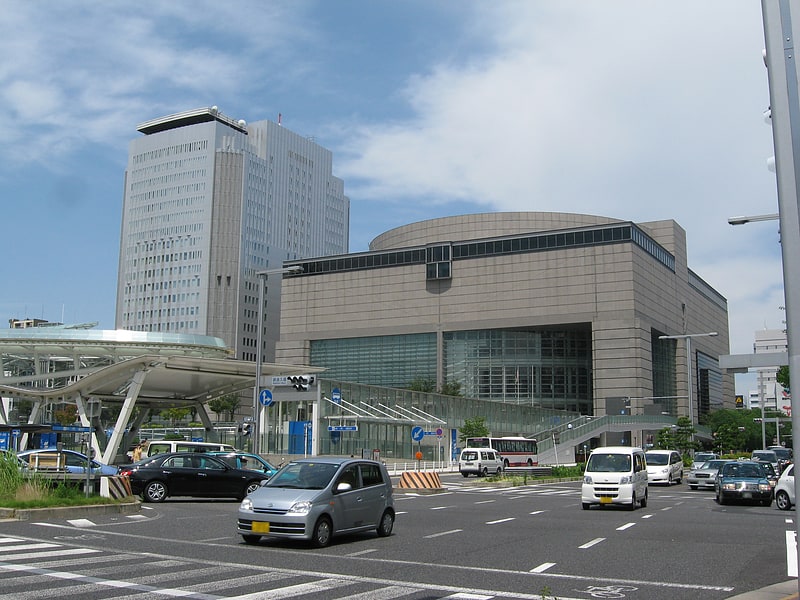
Also known as: 愛知芸術文化センター
Art center in Nagoya, Japan. The Aichi Arts Center is the main venue for the performing arts in Nagoya, Aichi Prefecture, Japan.
The center consists of:
- Aichi Prefectural Museum
- Aichi Prefectural Arts Theater
- Main Hall
- Concert Hall
- Aichi Prefectural Arts Promotion Service
- Aichi Prefectural Library
Oasis 21 is located right in front of the building.
The Aichi Art Center also hosts the fine arts exhibition Nitten.[23]
Address: 1-13-2 Higashisakura, Higashi-ku, 461-8525 Nagoya (東区)
Honkō-ji
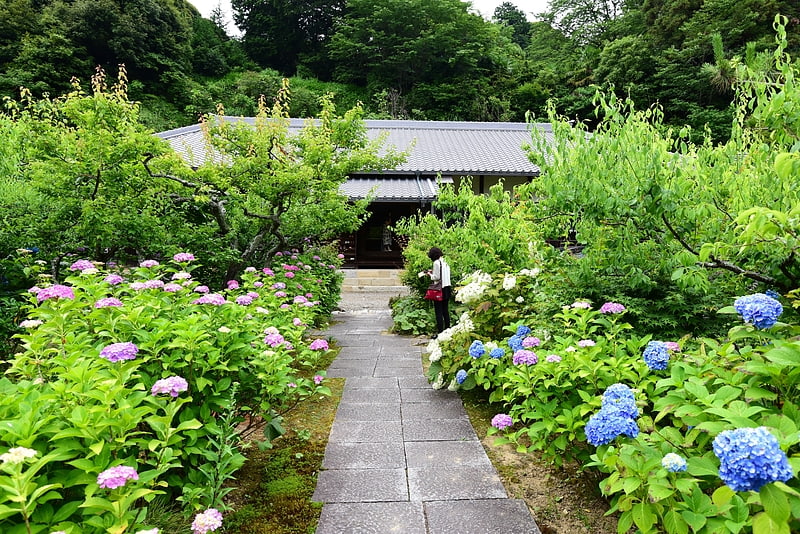
Honkō-ji is a Buddhist temple belonging to the Sōtō sect of Japanese Zen located in the town of Kōta, Nukata District, Aichi Prefecture, Japan. The temple is noted for its hydrangea flowers in spring. Its main image is a statue of Shaka Nyōrai.[24]
Brother Museum
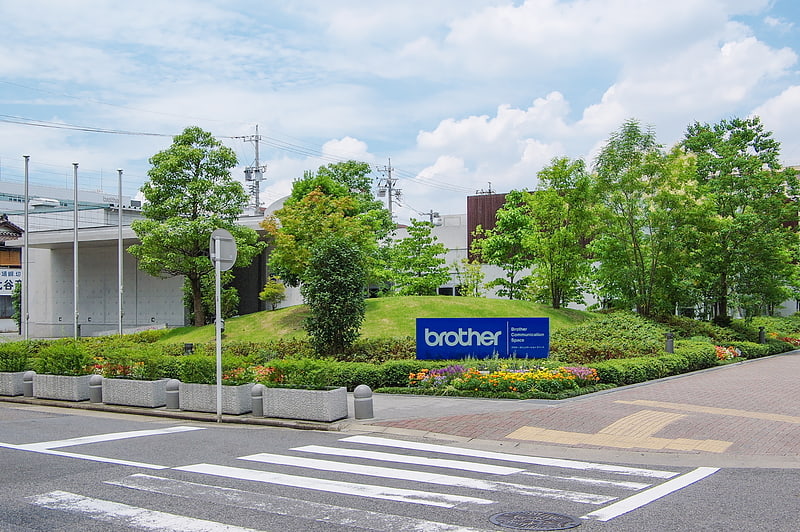
Brother Museum is a corporate museum located in Nagoya City, Aichi Prefecture, Japan. It is operated by Brother Industries.[25]
SCMaglev and Railway Park
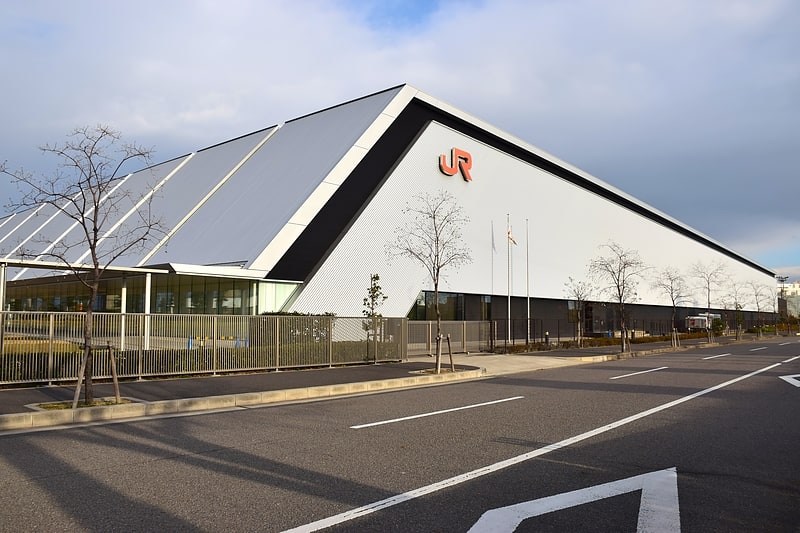
Also known as: リニア・鉄道館
Museum in Nagoya, Japan. The SCMaglev and Railway Park is a railway museum owned by Central Japan Railway Company in Nagoya, Japan. The museum opened on 14 March 2011.
The museum features 39 full-size railway vehicles and one bus exhibit, train cab simulators, and railway model dioramas.[26]
Address: 3丁目-2-2 Kinjōfutō, Minato-ku, Nagoya-shi, 455-0848 Nagoya (港区)
Yōki-sō
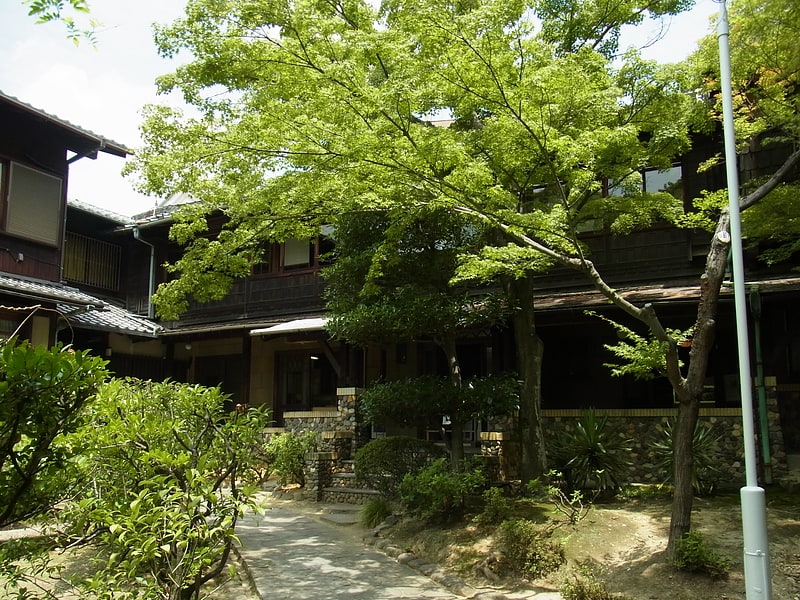
Also known as: 揚輝荘
Tourist attraction in Nagoya, Japan. Yōki-sō is a Japanese villa and gardens located in Chikusa-ku, Nagoya, central Japan. It is close to Nittai-ji temple.[27]
Kenchū-ji
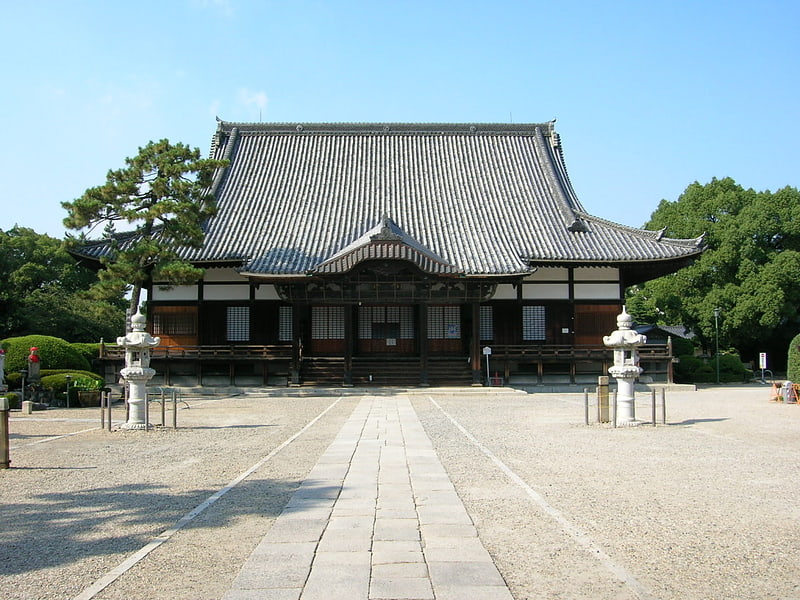
Kenchū-ji is a Jōdo-shū Buddhist temple in Tsutsui, Higashi-ku, Nagoya, central Japan. Starting in the Edo period, the mausoleums of the lords of the Owari Domain were located there, making it the Bodaiji of the Owari Tokugawa family.
The present main hall of the Nagoya Tōshō-gū was a mausoleum for Lord Tokugawa Yoshinao's consort Haruhime (春姫), which used to be located at Kenchū-ji, and was moved to the site in 1953 as a replacement. It is a designated cultural property of Aichi prefecture.[28]
JR Central Towers

Also known as: JRセントラルタワーズ
Building in Nagoya, Japan. The JR Central Towers are in Nakamura-ku in the city of Nagoya, central Japan. It is located right above Nagoya Station and serves as the headquarters of the Central Japan Railway Company. Built in 2000, it is the second-tallest building in Nagoya, and eighth-tallest overall in Japan as of 2015. It is the world's largest train station complex by floor area.
The office tower is slightly taller than the hotel tower.
Takashimaya and the Nagoya Marriott Associa Hotel are in the towers.[29]
Ajiyoshi Futagoyama Kofun
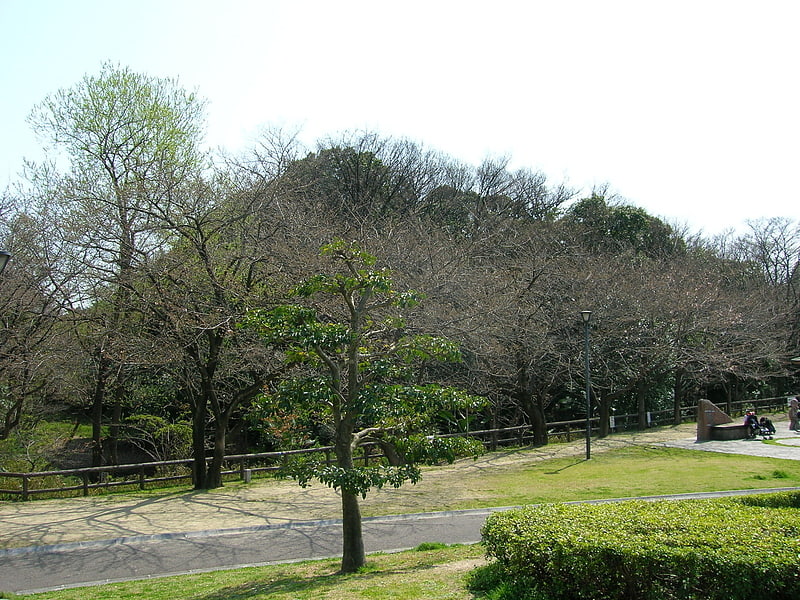
Ajiyoshi Futagoyama Kofun is a Kofun period keyhole-shaped burial mound, located in the Futago neighborhood of the city of Kasugai, Aichi in the Tōkai region of Japan. The tumulus was designated a National Historic Site of Japan in 1936. It is the largest of a cluster of kofun, including the Ajiyoshi Hakusan Jinja Kofun and the Gotosho Kofun, which together with the Ajiyoshi Kasugayama Kofun located about 500 meters to the northwest, forms the Ajiyoshi Kofun Cluster.[30]
Arako Kannon

Also known as: 荒子観音
Buddhist temple in Nagoya, Japan. Arako Kannon, also known as Jōkai-san Enryū-in Kannon-ji is a Buddhist temple located in Nagoya in central Japan.
It has a wooden pagoda which is one of Japan's oldest, dating to the 16th century. Maeda Toshiie's family bodhisattva.[31]
Seigan-ji
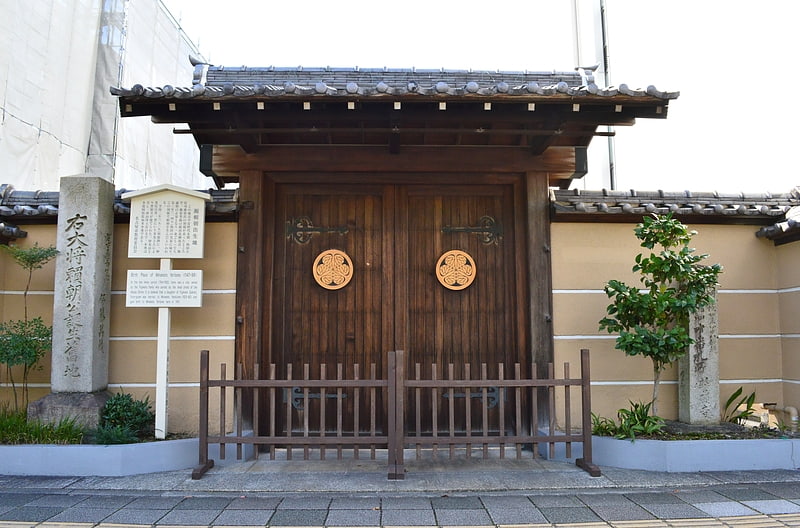
Seigan-ji is a Buddhist temple located in Atsuta-ku, Nagoya, in central Japan. It is located on Fushimi-dōri, one of the main avenues of the city.[32]
Nagoya City Museum
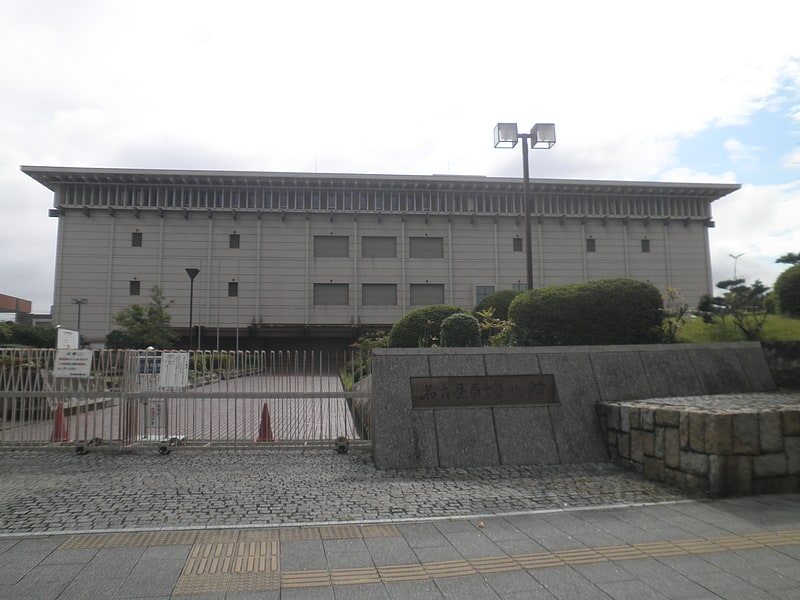
Also known as: 名古屋市博物館
Museum in Nagoya, Japan. The Nagoya City Museum is a museum of the city of Nagoya in Aichi Prefecture, Japan.
The Nagoya City Museum was established in 1977. Its collection includes archaeological materials, fine art, crafts, documents, books and folk materials including samurai armor and weaponry, many of which are put on exhibition. It also owns a collection of rare Kawana ware.
In addition to the permanent exhibition of the history of the Owari Domain starting from the Paleolithic period, special exhibitions and thematic exhibitions take place around every five to seven years, such as the one on Gandhara in 2003.
A memorandum of understanding and cooperation was signed in January 2000 with the Vienna Museum, establishing it as a partner museum.
The nearest stop by subway is Sakurayama Station on the Sakura-dōri Line.[33]
Address: 1 Chome-27−1 Mizuhotōri, Mizuho-ku, Nagoya-shi, 467-0806 Nagoya (瑞穂区)
Tsushima Shrine
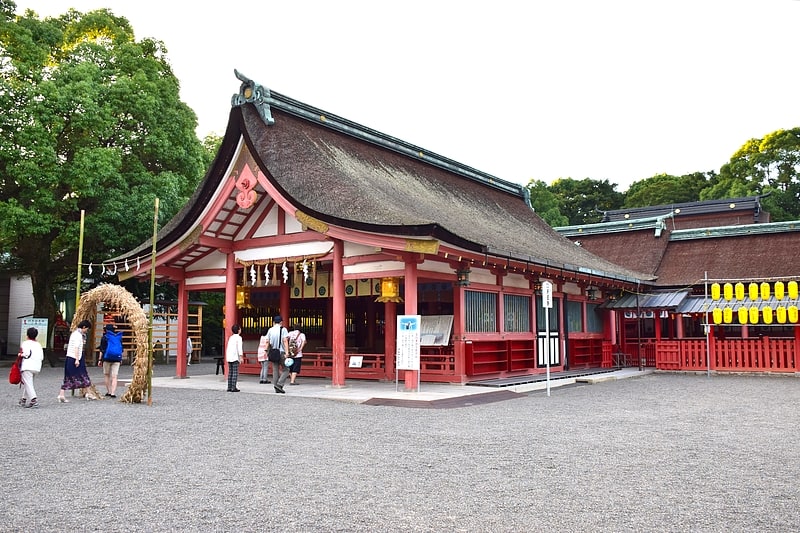
Also known as: 津島神社
Shrine in Tsushima, Japan. Tsushima Shrine is a Shinto shrine in Tsushima, Aichi Prefecture, Japan. It is the head shrine of a nation-wide shrine network of shrines dedicated to the Tsushima Cult, Centered primarily in the Tōkai region, this network has approximately 3,000 shrines, and is the tenth-largest network in the country. The main kami of this faith are Gozutennō, the god of pestilences, and Susanoo, two deities which have been conflated together. For this reason, like other shrines of the network it is also called Tsushima Gozutennō-sha.[34]
Address: 1 Shinmeicho, 496-0851 Tsushima
Nagoya City Science Museum
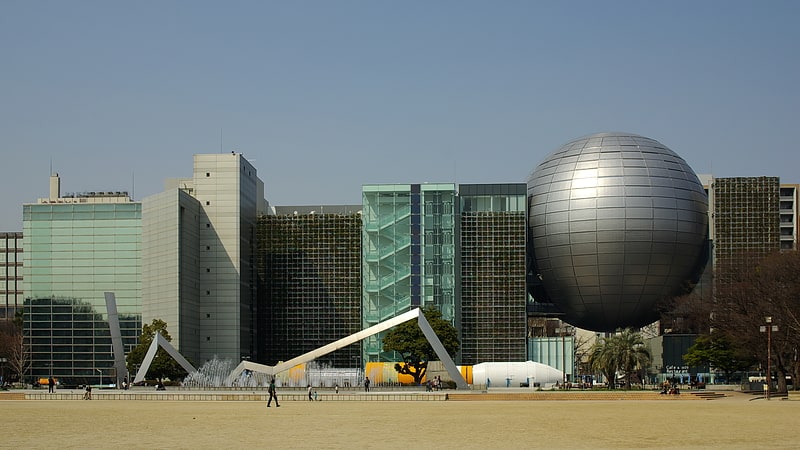
Also known as: 名古屋市科学館
Museum in Nagoya, Japan. The Nagoya City Science Museum is a museum located in Sakae, Nagoya, the center of Nagoya City, in central Japan.
The museum houses the largest planetarium in the world and has three main sections on modern technology, life sciences and general science with a variety of hands-on exhibits. In 2012 much of the museum was renovated to coincide with the opening of the Planetarium. The upper floor of the museum is currently devoted to a display about space and future technology, utilizing touch-screen tablets and other technology. Many of the exhibits have been specifically tailored for children, such as a model railway on the third floor in the transport section.
The museum also has features on the local Chubu region's links to science and industry.
It is located in Shirakawa Koen along with Nagoya City Art Museum, midway between Osu Kannon and Fushimi subway stations, on Fushimi-Dori.[35]
Address: Nagoya-shi, Naka-ku, Sakae, 2 Chome−17−1, 〒460-0008 Nagoya (中区)